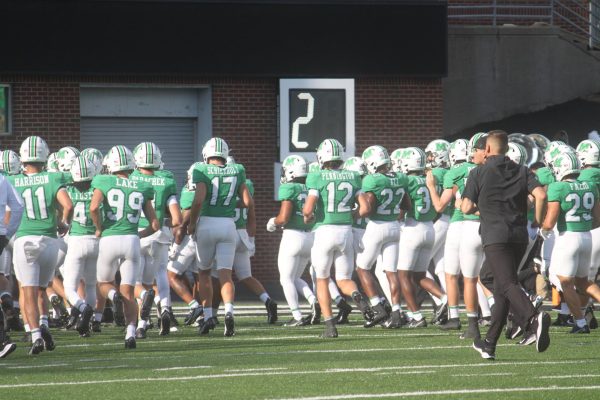Column: The overlooked evoltion of Tim Duncan
More stories from Bradley Heltzel
The San Antonio Spurs will make its 2015-16 NBA season debut Wednesday night when it takes on the Oklahoma City Thunder at 8 p.m. on ESPN, alleviating the basketball ecosphere of the previously denied pleasures of witnessing “Spurgasms.”
“Spursgasms” represent basketball’s artistic novelty, a series of pinging passes working in synchronization which often result in an easy layup or a wide open 3-pointer for the team to which the term’s namesake is owed. The Spurs have long headed the NBA-franchise hierarchy and have been annual championship contenders structured upon the sustained malleability of head coach Gregg Popovich and future Hall of Famer Tim Duncan.
The year-to-year success of the Spurs is what has made Duncan’s career transcendent, but it is also what has curiously and egregiously made Duncan’s career an ancillary topic of discussion to the sports landscape.
Duncan and the Spurs were respected during the apex of Duncan’s career, which extended into the latter half of the 2000s, but the continuity of the team’s winning percentage and playing style was dull in comparison to the combustible, yet brilliant Kobe Bryant-Los Angeles Lakers, the Steve Nash-engineered “Seven Seconds or Less” Phoenix Suns and even the loveable early-2000s Sacramento Kings.
Even in the current era of NBA basketball, which has been defined by the Spurs’ origination of the pace-and-space style, San Antonio has been overshadowed, first by the Miami Heat’s Big Three and now by the amplified version of itself–the Golden State Warriors.
Yet, as the NBA has transitioned from the days when brute post-ups and midrange isolation jumpers were the offensive norm to today’s version where pick and rolls are warped within 3-point barrages, Duncan has ensured the Spurs’ winning ways stand the test of time.
Duncan’s adaptation to the NBA’s style of play has long been an underappreciated component of his career, one that has seen his effectiveness plateau as opposed to steadily regress like so many of his peers who entered the league alongside him in the late ‘90s.
Duncan once stood as the prime example of NBA big men along with players such as Shaquille O’Neal and Kevin Garnett. The low block was his offense-producing factory and the paint was his to protect, banging bodies with opposing bigs and turning back shots of driving perimeter players. Duncan won two MVPs, four titles and three Finals MVPs during this era.
However, the days of post-ups and isolation offenses were beginning to be shucked from NBA playbooks in the late 2000s as the birth of analytics began to expose the inefficiencies of such strategy. Suddenly the NBA became a league of little men, with perimeter players darting around picks, needling pocket passes to rolling bigs and aligning upon the 3-point arc for shots equating to two-thirds the value of those antiquated post-ups.
Duncan was forced to adjust his game and his body to continue the winning traditions he helped implement in San Antonio. Duncan lost nearly 20 pounds between the 2010-11 season and the 2011-12 season, evidenced by his clearly-visible stretch marks, as the offense had evolved away from Duncan post-ups and toward point guard Tony Parker operating in pick and rolls with shooters abound.
The evolution of the NBA’s preferred style of generating points through pick and rolls or pick and pops has coalesced with the percentage of big men’s buckets that come via an assist. Duncan’s scoring methods showcases an adopted modern-day skillset of being able to pop out for midrange jumpers, while also possessing the spryness, nimbleness and coordination to catch and finish on rolls to the rim.
In the 2009-10 season, 55.1 percent of Duncan’s 2-point field goals were assisted the highest mark of his career for a single season. Since, Duncan’s percentage of assisted 2-point field goals has risen in each season (58.5, 61.5, 66.6, 66.9 and 73.9).
Duncan’s evolution as a player has extended his years of NBA championship contention as a key cog to his team’s success. He has grappled the new skillset of big men required to thrive in today’s NBA offenses, and although his strength in the post has deteriorated and his mangled left knee has made his movements arduous, Duncan has maintained his defensive acumen, ranking as one of the better rim protectors in the league last season allowing just a 47 percent shooting clip.
With the addition of former Trail Blazers power forward LaMarcus Aldridge this offseason, the Spurs are primed to be amongst the lead competitors for the Larry O’Brien Championship trophy in June again this season. And Duncan will be an integral piece, finishing pick and rolls despite deteriorated athleticism, snaring rebounds with a bum knee and somehow managing to block shots without jumping.
So when you see that first “Spurgasm” of the season Wednesday, remember that Tim Duncan made it all possible by altering his game and successfully bridging the gap of two offensive eras of NBA basketball.
Bradley can be contacted at [email protected]
Your donation will help continue the work of independent student journalism at Marshall University. If you benefit from The Parthenon's free content, please consider making a donation.





